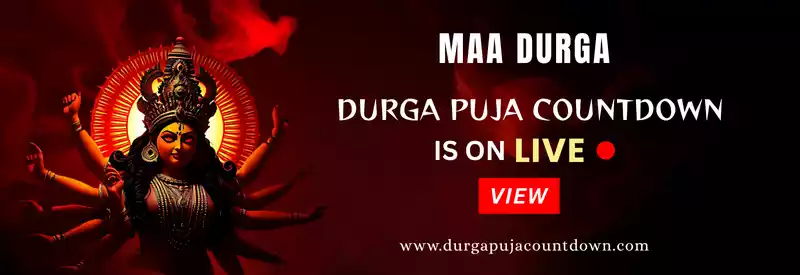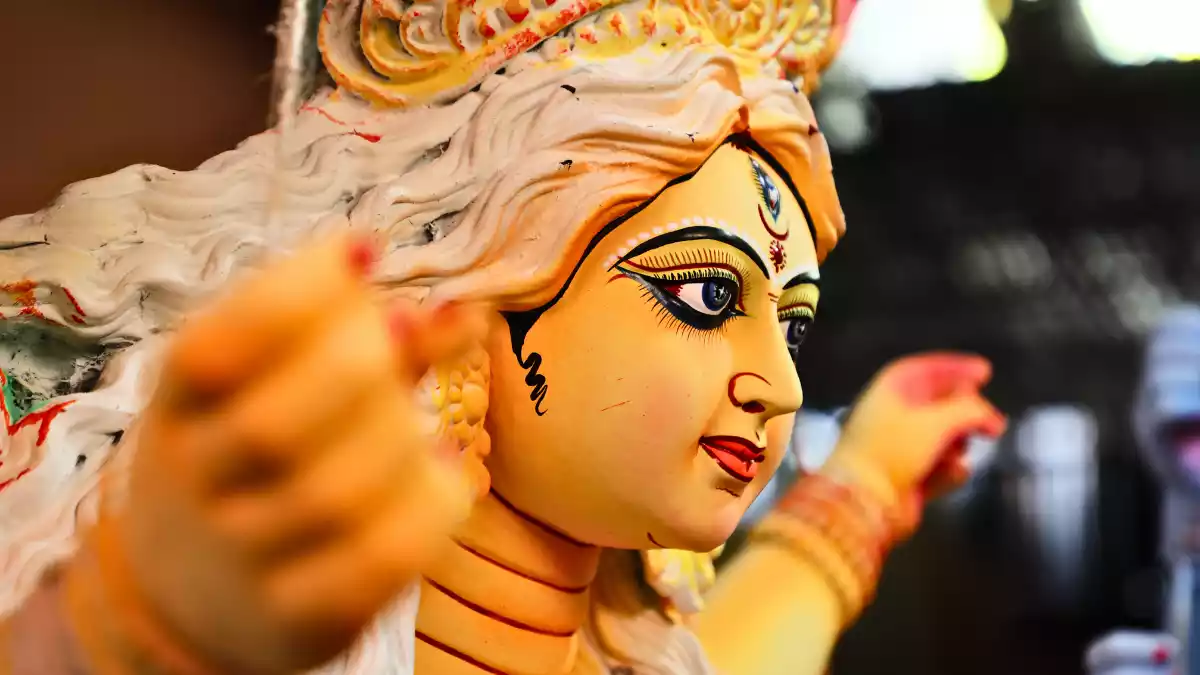Why Do We Celebrate Durga Puja? Durga Puja is one of the most important and joyful festivals in India, especially in West Bengal and nearby regions.
But have you ever wondered why we celebrate Durga Puja? It’s more than just a grand celebration.It is a spiritual journey, a symbol of good over evil, and a deep connection with the divine feminine power.
 Join Now
Join Now
Discover the true spiritual meaning behind Durga Puja and why millions celebrate this divine festival each year. Learn the story, beliefs, and values that make Durga Puja special.
Let’s explore the real reason behind this grand festival and what it truly means on a spiritual level.
The Origin of Durga Puja
Durga Puja celebrates the victory of Goddess Durga over the demon Mahishasura. According to Hindu mythology, Mahishasura was a powerful demon who any man or god could not defeat. He caused destruction in the world and even challenged the gods in heaven.
To defeat this evil force, the gods combined their powers to create a strong goddess, Durga. Armed with divine weapons and riding a lion, she fought Mahishasura for nine days and nights. On the tenth day, known as Vijayadashami, she finally killed him.
This powerful story is the heart of Durga Puja. It reminds us that good always wins over evil, no matter how strong the darkness seems.
The Spiritual Significance
Beyond the myth, Durga Puja carries deep spiritual meaning. Here’s what it teaches us:
- Victory of Good over Evil: Durga’s victory shows that truth and righteousness will always win.
- Power of the Divine Feminine: The Goddess is a form of Shakti—the energy that creates and protects the universe. She shows that women hold strength, courage, and leadership.

- Inner Awakening: Each day of Durga Puja represents a battle within ourselves—against ego, anger, greed, and other negative traits.
- Unity and Devotion: The festival brings people together in prayer, celebration, and cultural unity. It reminds us to stay connected with our roots.
How We Celebrate Durga Puja
Durga Puja is celebrated over five main days: Shashthi, Saptami, Ashtami, Navami, and Dashami. Here’s a quick look at what happens each day:
| Day | Celebration | Meaning |
|---|---|---|
| Shashthi | Welcoming the Goddess with rituals and drumbeats | Arrival of hope and positive energy |
| Saptami | Ritual bathing of a banana plant (symbolizing the goddess) | Purity and preparation for divine blessings |
| Ashtami | Main day of worship and Kumari Puja | Honoring feminine power in young girls |
| Navami | Final battle of Durga with Mahishasura | Intense spiritual energy and devotion |
| Dashami | Immersion of the idol (Visarjan) and farewell | Letting go and celebrating new beginnings |
Durga as a Symbol of Strength
Durga is not just a goddess; she is a symbol of strength, protection, and love. She carries ten weapons in her ten hands, which represent different powers such as wisdom, courage, and patience. Her lion represents power and determination.
By worshipping Durga, we connect with these inner strengths and ask her to guide us through the difficulties of life.
Why Durga Puja Is So Special Today
In today’s world, Durga Puja reminds us to:
- Stand up against injustice
- Respect women and their strength
- Celebrate our culture and traditions
- Be united with our community and family
- Keep faith during challenging times
It is not just a religious event but a celebration of life, values, and human spirit.
Durga Puja Across India and the World
Though most popular in West Bengal, Durga Puja is celebrated in many parts of India—like Assam, Odisha, Bihar, Jharkhand, Maharashtra, and Delhi. With the Bengali diaspora, the festival has now spread across the world including in countries like the USA, UK, Canada, and Australia.
No matter where it is celebrated, the devotion remains the same.
Conclusion
So, why do we celebrate Durga Puja?
Because it brings us closer to our spiritual roots. It teaches us that even the greatest troubles can be defeated with faith, courage, and unity. It honors the divine feminine and reminds us of our values, our culture, and our strength.
Durga Puja is not just about colors, lights, and rituals—it is about transformation, inside and out.


